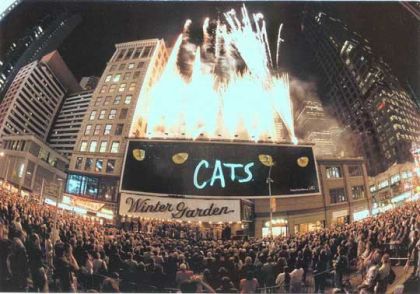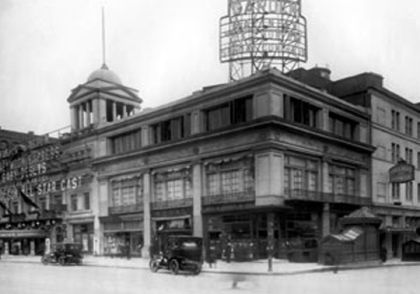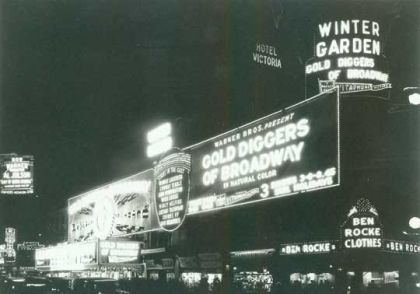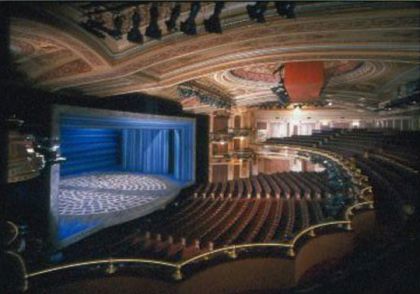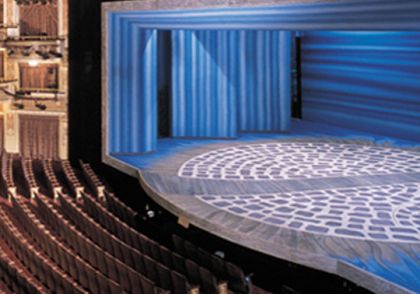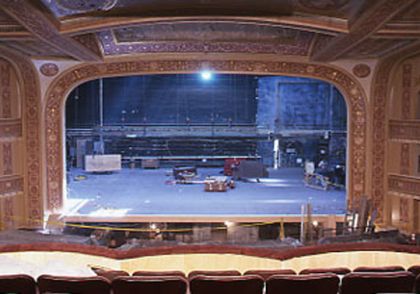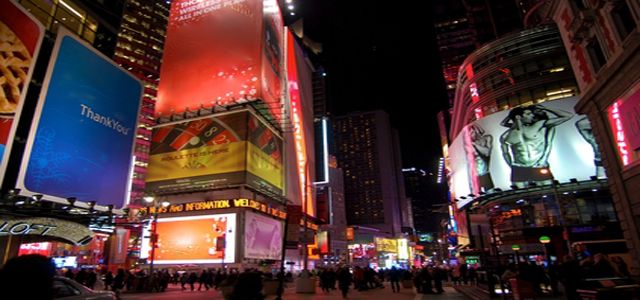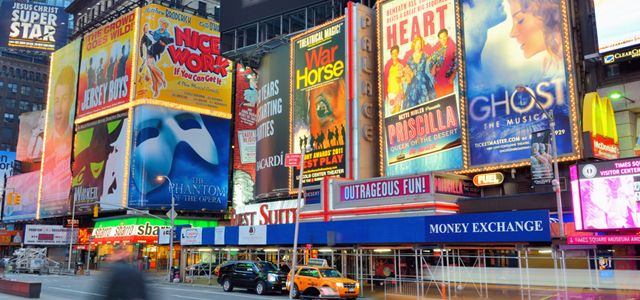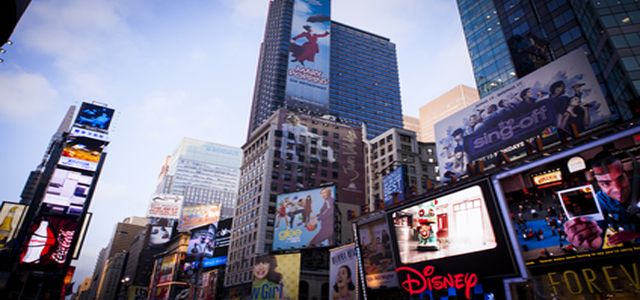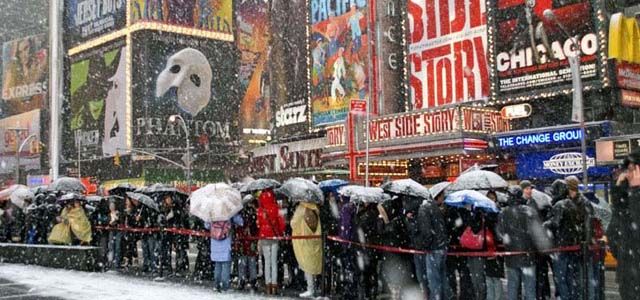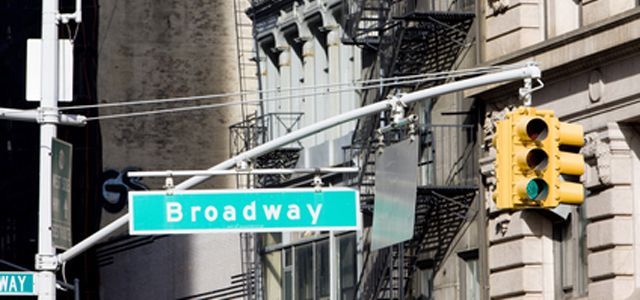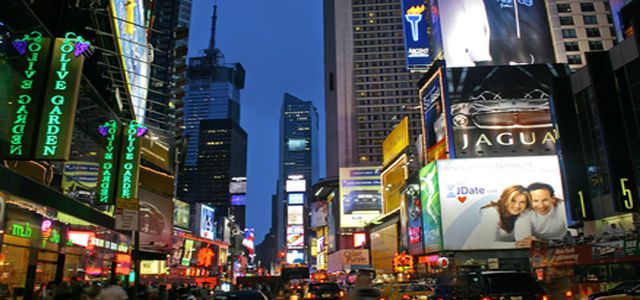The Winter Garden Theatre
The Winter Garden Theatre has been operated by the Shuberts longer than any of its other Broadway playhouses. In 1896, William K. Vanderbilt constructed the second American Horse Exchange when Times Square (then Longacre Square) was the center of the horse and carriage trade. The Winter Garden currently inhabits this site. The Shuberts purchased the Exchange in 1911, and by then, horses had been replaced by automobiles and legitimate theatre was becoming popular. The Shuberts transformed the Exchange into a theatre in 1911. It served short stints as a movie house from 1928 to 1933 when the Warner Brothers leased it, and in 1945, when United Artists operated it.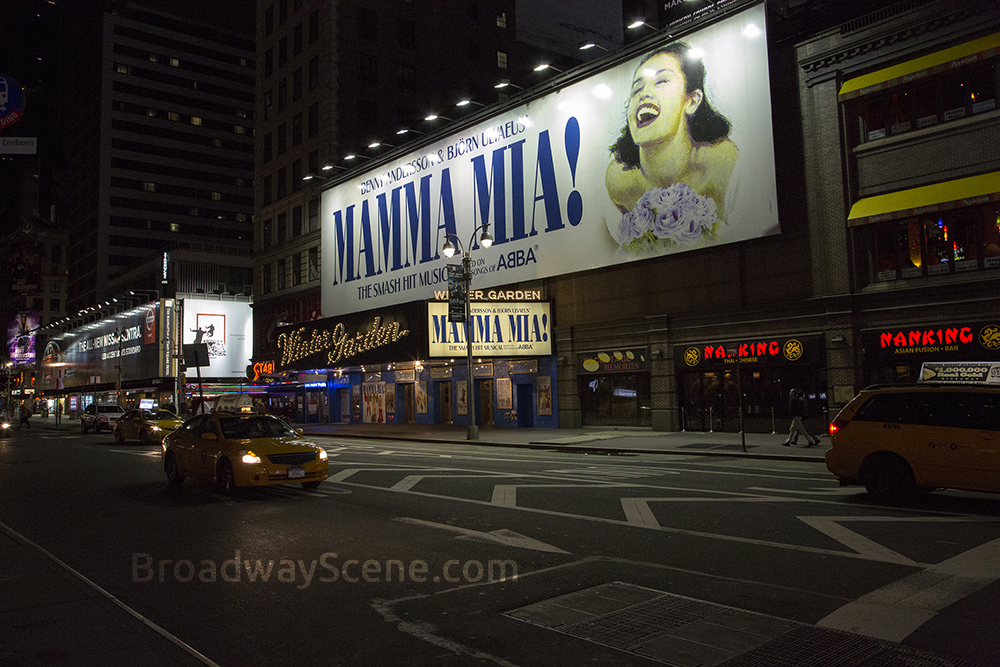
Notable History
On March 10, 1911, the Winter Garden opened with Al Jolson in Jerome Kern’s musical La Belle Paree. This production helped Jolson’s renowned performing career take off, and he starred in many Winter Garden productions after that. The Winter Garden has primarily been used to house musicals and revues, including many editions of Ziegfeld’s Follies, which was presented here from 1934 until 1947. The casts included stars such as Fanny Brice, Gypsy Rose Lee, Bobby Clark, Eve Arden, Josephine Baker, Bob Hope, and Willie Howard. In 1954, Peter Pan flew into the theatre with Mary Martin as the boy who would never grow up. It was followed by Chita Rivera and Carol Lawrence in the premier of West Side Story in 1957.
The 1960s were filled with numerous successes, including Funny Girl in 1964, which propelled Barbara Streisand’s career, and Mame starring Angela Lansbury in 1966. Various big hits and pioneering productions were staged in the 1970s and 1980s. Angela Lansbury revived Gypsy in 1974, Andrew Lloyd Webber’s Cats debuted in 1982 and ran until 2000, and Mamma Mia!, a musical based on the songs of ABBA, premiered in 2001.
It Doesn’t Smell Like Horses Anymore
The American Horse Exchange was transformed into the Winter Garden Theatre by architect William Albert Swasey. He converted the show ring into a semi-circular auditorium with only one balcony, and decorated it with an outdoor English garden theme. Because of the space, Swasey was required to design an abnormally wide venue, which brought the audience closer to the stage. Swasey left the Exchange’s tethers exposed and covered the ceiling with sky blue canvas and the walls with latticework. The proscenium arch and box fronts were interwoven with wreaths and leaves. At one point, the stage featured a water tank, and in its first ten years presented a runway out into the audience hailed as “The Bridge of Thighs.” The Winter Garden still features a classical exterior with Palladian arches and columns.
Herbert J. Krapp refurbished the Broadway theatre’s interior in 1923, removing the infamous “Bridge of Thighs.” He lowered the ceiling and proscenium arch, and concealed the tethers, adding fancy garnishing. For the 1982 production of Cats, the house had been drastically altered to adapt to its junkyard setting. When it closed in 2001, architect Francesca Russo supervised a multimillion dollar renovation of the theatre to its 1920s splendor.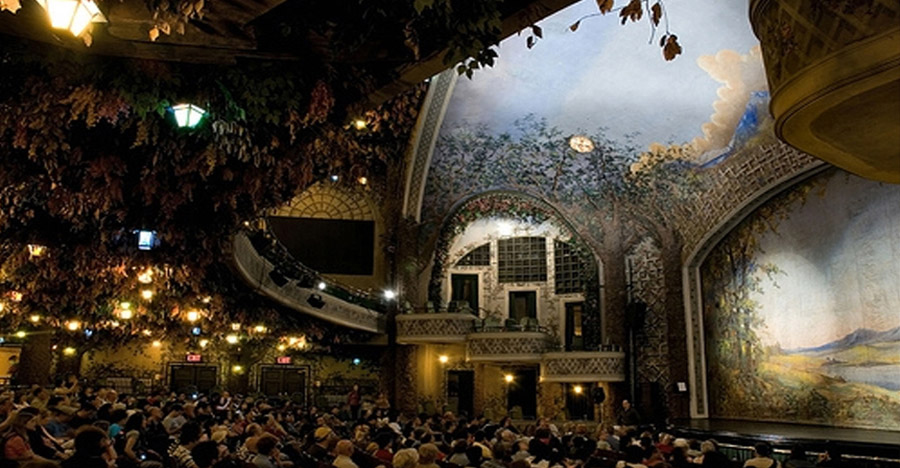
A Legitimate Theatre Devotee
Aside from short stints operating as a movie house, the Winter Garden Theatre has been devoted to housing legitimate productions since its opening. With a seating capacity of about 1,600, the venue features a huge auditorium, large stage, and spacious backstage facilities, which make this theatre ideal for big musicals. Popular Broadway hits that have been performed in the space include West Side Story, Follies, Funny Girl, and the renowned production of Cats. The long-running production of Mamma Mia! certainly lived up to the original expectations of the Winter Garden: to dedicate its stage to innovative, international, sensational and musical theatrical shows.



